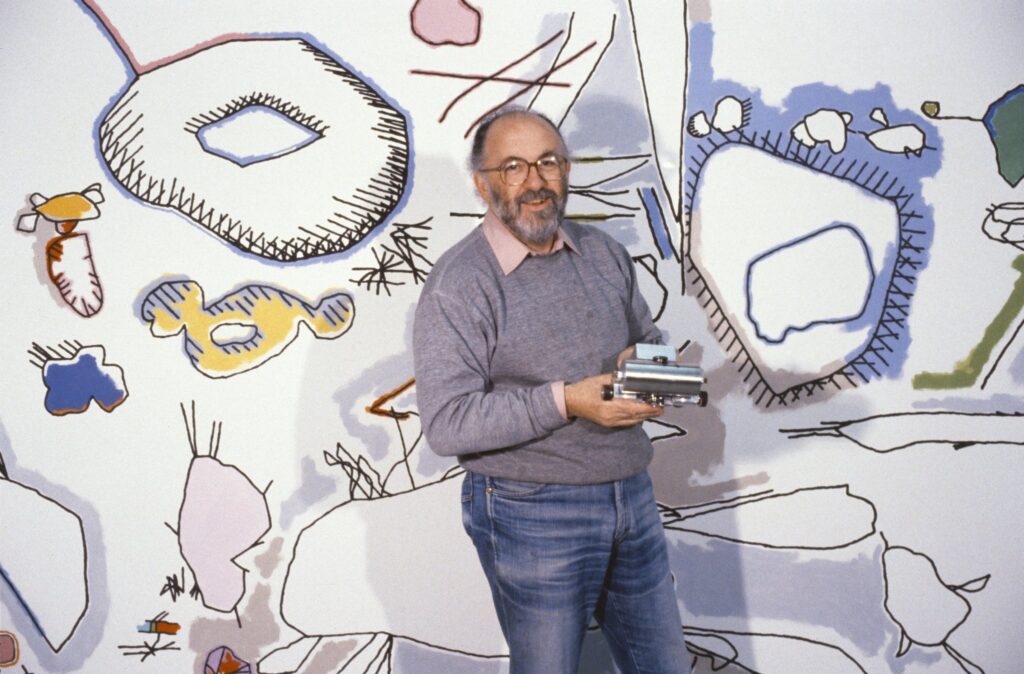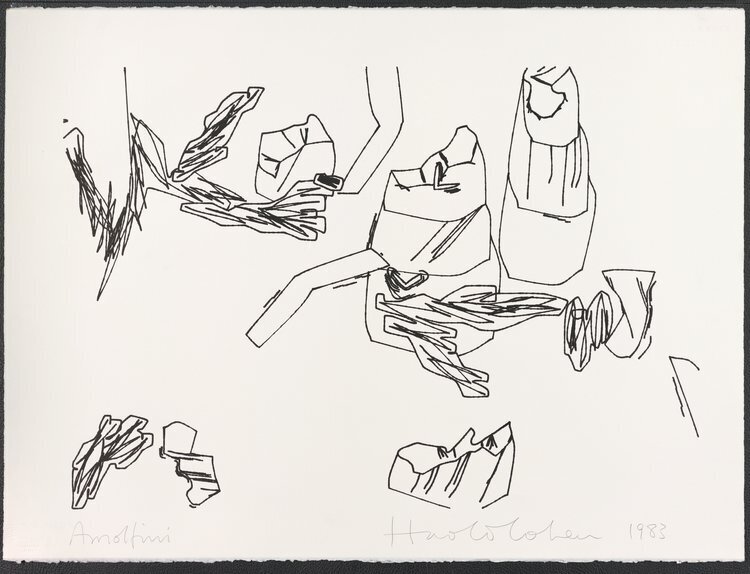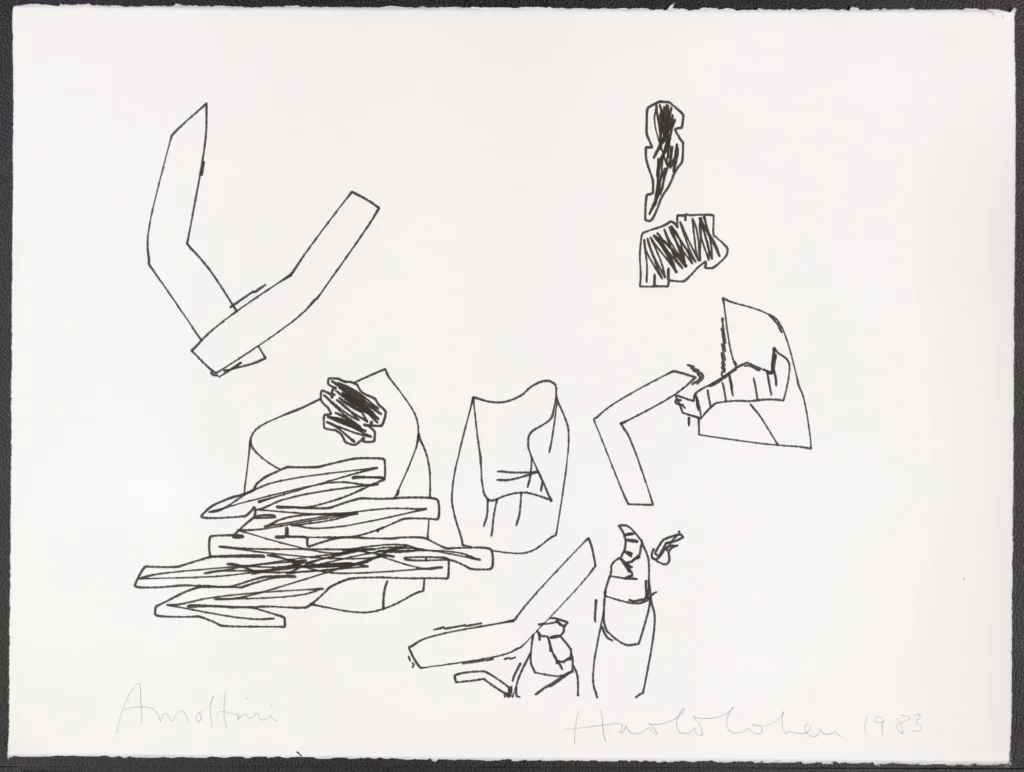The world’s first AI artist
“Let’s begin with a story. Once upon a time there was an entity named Aaron. …Aaron’s education was actually quite unusual. There were no courses in US history, no calculus, no languages: in fact, there were no courses at all, and Aaron was awarded no degree. We might best summarize this unorthodox education by saying that it was aimed exclusively — literally exclusively — at teaching the student how to make drawings.”
source: HOW TO MAKE A DRAWING by H.C.

source: web
Who would have thought that the world’s first AI artist was born nearly 100 years ago. Meet Harold Cohen, a British-born artist, painter, printmaker and designer of textiles but most importantly a pioneer of generative art and Artificial Intelligence. Almost half a century ago, in the era preceding the AI boom and the surge in popularity of cutting-edge machine learning tools, Cohen dedicated himself to a singular endeavor: developing a program named Aaron, aimed at instructing a robot in the craft of drawing.
After enjoying success as a painter, Cohen made the move to California. He took up a post as visiting scholar in the Artificial Intelligence Laboratory at Stanford University. It was there, amidst the innovative world of computing, that his artistic path took a significant turn. Fascinated by the potential of programming, he began to explore its capabilities beyond mere digital tools, seeing it as a new avenue for creative expression. Built by Cohen in 1973, Aaron became a symbol of independence in art-making. It was among the pioneering programs that didn’t rely on pre-established patterns but instead made art through independent decision-making.


source: web
At first, Aaron was limited to generating monochrome line drawings, which were later colored by Cohen manually. Motivated by a quest to understand the essence of art, the artist and constructor continually modified the program, enabling it to autonomously select and apply colors. By the 1980s, the program advanced to the point where it could render real-world shapes, even including human figures. Way ahead of its time, Cohen and Aaron were all about incorporating the principles of AI. But in contrast to what is going on nowadays, the aim wasn’t merely to generate digital art but to get to know the cognitive process of creating art.

“Aaron was clearly not a tool in an orthodox sense. It was closer to being a sort of assistant, if the need for an human analogue persists, but not an assistant which could learn what I wanted done by looking at what I did myself, the way any of Rubens’ assistants could see perfectly well for themselves what a Rubens painting was supposed to look like…”
source: HOW TO MAKE A DRAWING by H.C.
The lifetime project of Aaron was Cohen’s attempt of creating a new language of art. He translated his artistic instincts into algorithms, effectively turning AARON into an extension of his creative journey.





In an interview dating back to 2011* Harold Cohen said that Aaron could go on producing work indefinitely, but “the problem has always been that it would go on being the same work — not the same individual image, but the same formulation, which, by the way, is what most human artists do anyway.”
Was in fact a machine capable of creativity? We are just going to leave it for you to decide.
To get to know more about the creator and Aaron itself please refer to this incredible lecture by Mr Cohen: Reflections on Designing and Building AARON.

Harold Cohen passed away on the 27th of April 2016.